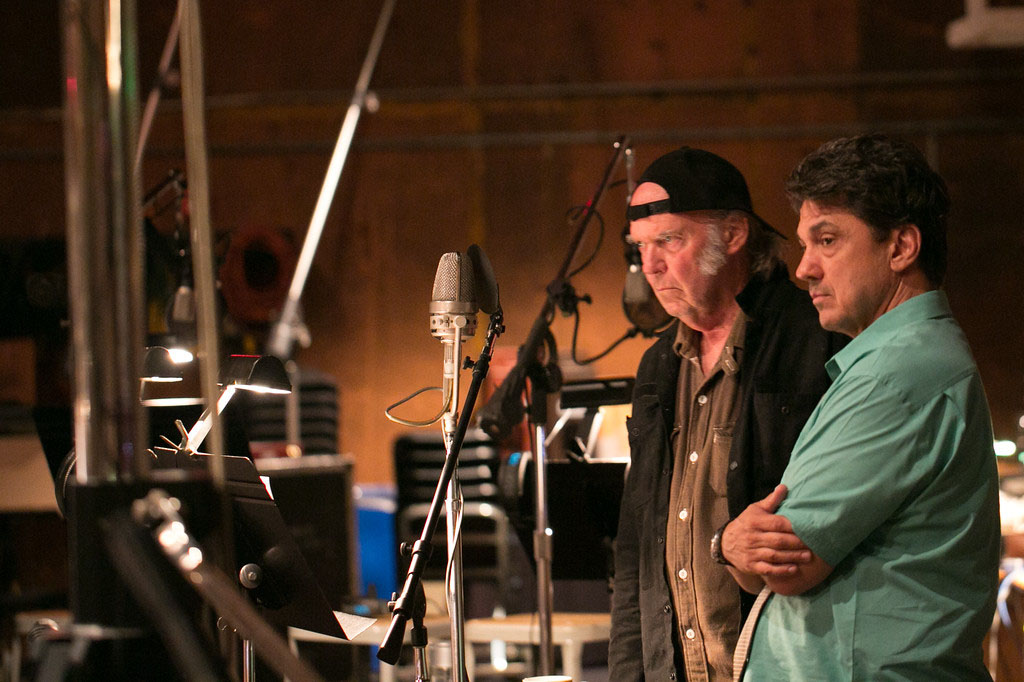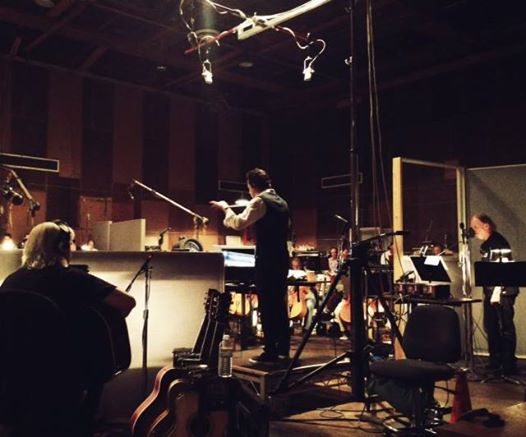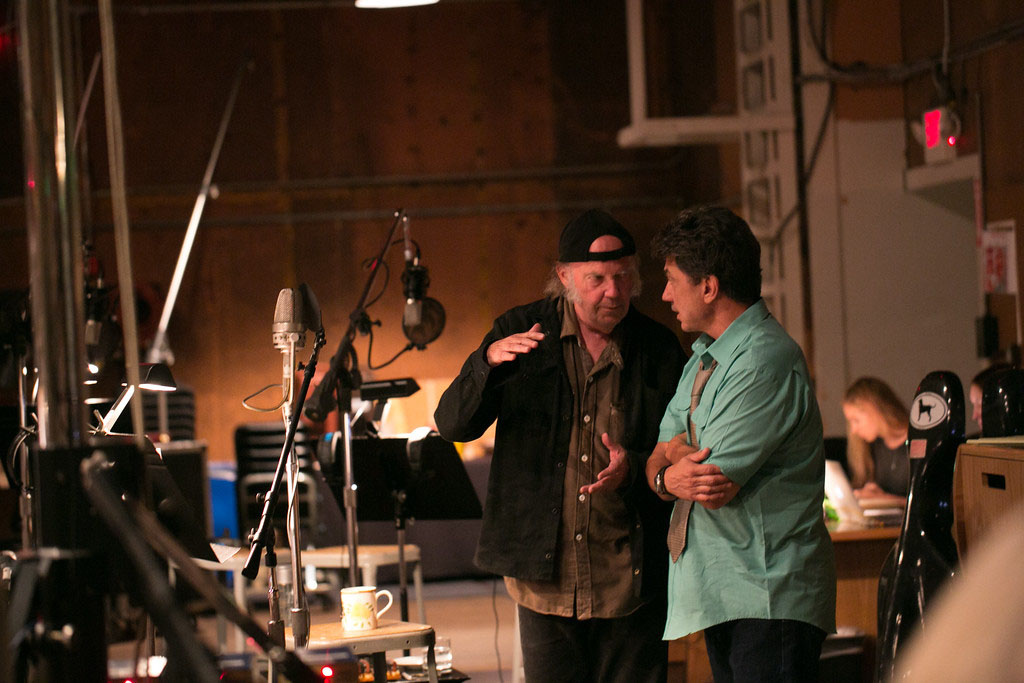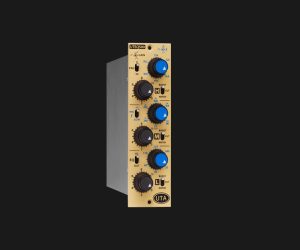
ON BIG BANDS AND NEIL YOUNG

Neil Young’s latest album Storytone is a departure from the musician’s usual style. Young, along with his producer Niko Bolas, created multiple versions of the album, incorporating big band and orchestral music, with an old world crooner style of singing.
Niko Bolas is a consummate audio renaissance man. His career has seen him juggling the roles of producer, engineer, mixer, technologist, consultant, entrepreneur, et cetera, et cetera. He’s worked with scores of artists, spanning the globe and decades of popular music. Just to name drop a few, Bolas has worked with, Melissa Etheridge, Warren Zevon, Kiss, Rod Stewart, Barbra Streisand, Billy Joel, Fiona Apple, Toto, Tracy Chapman, The Jacksons, Disney/Pixar’s Cars (with John Mayer), Disney’s Frozen: The Songs, Demi Lovato, The Mavericks, OneRepublic, and Zedd.
However, his closest association has been with Neil Young, with whom he has worked alongside for more than three decades. That collaboration has seen Bolas either producing and/or engineering, on over a dozen of the Canadian rocker’s albums, including Freedom (1989), Ragged Glory (1990), and Living With War (2006).
Someone as restless and driven as Young, is prone to the odd creative detour and needs a sympathetic collaborator, one that doesn’t try to rein in his creativity. Which is why the Young/Bolas pairing has worked so well. Their latest work together is the recent album Storytone, for which both Young and Bolas share producer credit.
This was the second full-length album from Young this year (after the earlier release of his lo-fi covers album A Letter Home), and the new album (Storytone) has multiple incarnations. The first recording, with Young singing solo, accompanying himself on either guitar, piano, or ukelele, was released on the deluxe edition’s first disc. These bare-bones songs are beautiful in their simplicity, and were also used as worktapes for further arrangements. Whilst Young was touring with Crazy Horse, Bolas worked with Michael Bearden and Chris Walden to flesh-out different approaches to the songs, creating both orchestral and big-band arrangements. By the time Young was ready to return to the studio, a new version of the album was already close to completion.
Lush orchestration isn’t new for Young, his classic album Harvest (1972) got the treatment, but this was the first time his singing verged on a type of crooning. Bolas encouraged Young to break from his usual vocal styling, by adopting unique phrasing and an old world croonerism to accompany the new arrangements.
Bolas recalls, “In working on the album’s fuller version, which we recorded second, the main experiment was to have Neil sing without holding an instrument. I encouraged him not to hold an instrument because it changed his phrasing completely – he became a singer, not a singer-songwriter. There is a big difference there, and it’s one that we hadn’t gotten around to exploring before. Suddenly you’re focusing on where you put your consonants, how long you hold your vowels, how you deliver the lyric. And that is not to take anything away from Neil’s vocal takes on all the other records he’s done, with me or otherwise – obviously he’s one of the all-time great rock singers, period; but taking the guitar or keyboard away from him really changed his approach, and he adapted beautifully, and frankly it sets this work apart from all the other great albums in his catalog.”

“There’s really no ‘producing’ Neil,” Bolas laughs. “What you have to do is gather the adjectives he’s giving you and figure out how to build it. He had noted to me before how it was a dream of his to stand in the middle of a room and sing with an orchestra. When we started tracking his vocals, on the downbeat it was terrifying, but within about 30 seconds, he understood and was comfortable, and there was no stopping him after that.”
The orchestrated album was recorded over four days of sessions at Los Angeles’s Sony MGM Studios, two days with Bearden and two with Walden. The earlier solo acoustic version was completed over two days at Capitol Studios.
Bolas remarks, “Neil called me up said ‘I have 10 new songs I want to record,’ and they were all really fresh emotionally. We went in the studio with Al Schmitt, one of my favorite engineers and favorite people and someone whom Neil has worked with before and really trusts. We built what I call a ‘pawn shop’ – unique old guitars, vintage keyboards, ukuleles and other toys. Nothing from Neil’s ranch, and nothing that he was used to playing. So he’d pick up a new tool that he wasn’t familiar with, and we’d immediately cut a take of a song. I believe all instruments have an energy, and there’s always a song in them. If you pick it up for the first time and you’re the kind of person that is connected to a muse like Neil is, you’ll get that energy. It was inspiring and fresh, and the results were extraordinary.”
Bolas was excited to have Schmitt’s involvement on the album: “Al is the best engineer I know. Although Neil and I share producer credit on this project, it was important that Neil [stayed] more focused on his performances [rather] than the specifics of the production. I knew that if he looked through the glass and saw Al – because he trusts Al implicitly – he would stay focused on his amazingly inspired solo performances in the early sessions or the nuanced vocal approach of the later sessions, and he wouldn’t shift his concentration and try to come into the control booth too often!”
However, the orchestral and acoustic album version are not the only two versions of the album, multiple arrangements were recorded. As Bolas notes, “There is a great protest song in these sessions – ‘Who’s Gonna Stand Up,’ and there are even more versions of that song that we produced. There is one that was recorded live with Crazy Horse that we added horns to, and there’s a version with a children’s choir that Neil plays a Storytone keyboard on. I’m sure these versions will see the light of day somehow. And there’s a version of the whole album that we’ve been working on that edits together different aspects of the different versions – Mixed Pages is what we’re calling that one. I imagine that will also show itself at some point.”
Regardless of all of the stylistic departures, Bolas believes that Young, Schmitt and himself (along with the different arrangers) have created a beautiful and memorable collection of songs.
He said, “When you’re listening to a truly great record, you don’t think about what it sounds like, because you’re too busy being immersed in the emotion and the performance. When you get a chance to work with talented people, and they bring their ‘A-game,’ you can sit back and let them do their work. It was easy. On the days that mattered, all I had to do was make sure the food got delivered!”
Bolas, a true audio renaissance man, finished by saying, “Amazing records are the ones where your second thought is how good it sounds. Your first thought is how good it feels. That’s what you try to capture with every record, and we got it here”
Both standard and deluxe editions of Storytone are now available for purchase.

Excerpts from PR
















RESPONSES